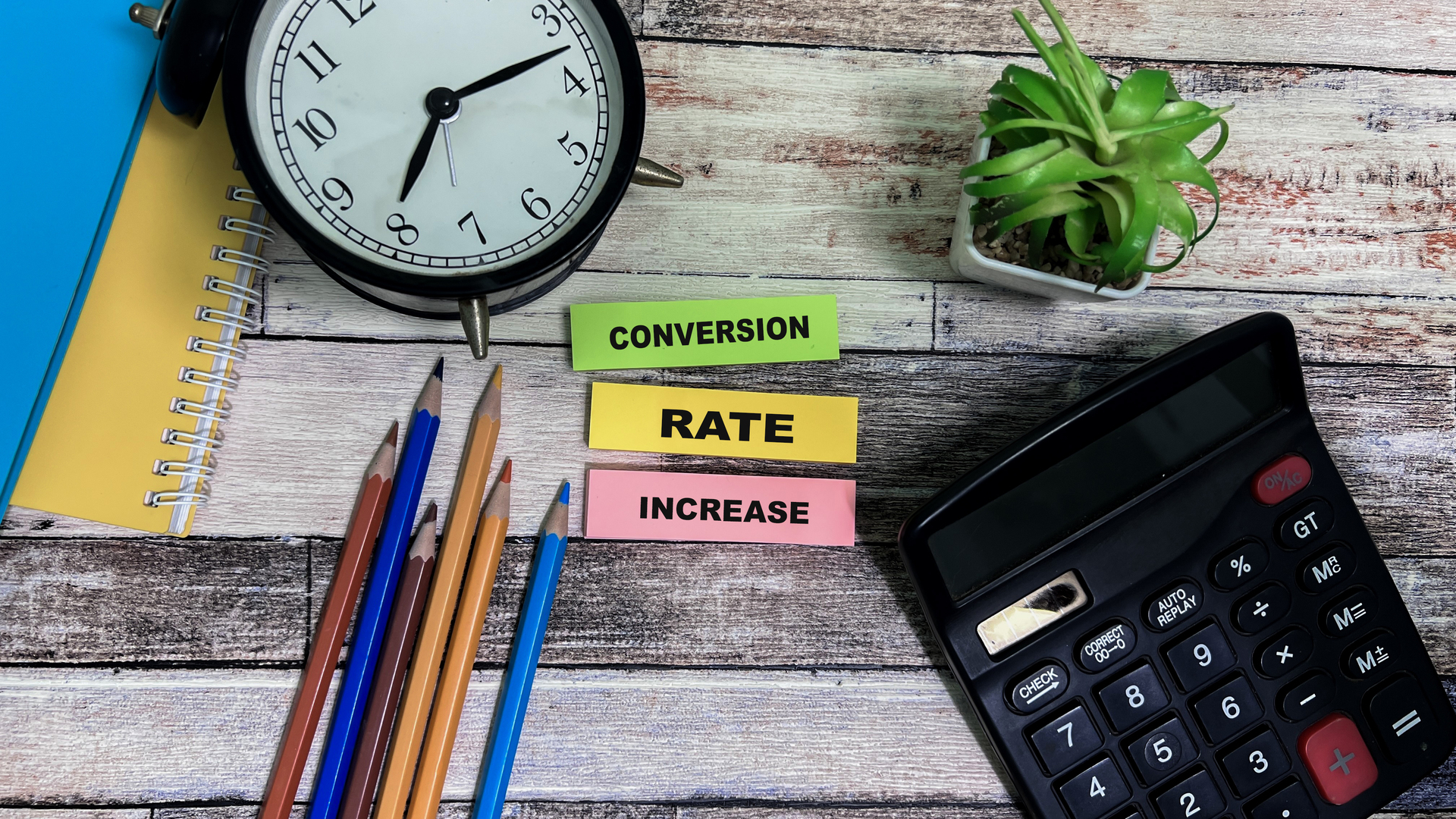Clicks Are Great — But What About The Conversions?

- Clicks can create a false sense of success if they’re not leading to meaningful user actions.
- A strong strategy prioritizes conversions by focusing on user intent, clear messaging, and optimized landing experiences.
- Key tools like analytics, heatmaps, and CRM data provide deeper insights into user behavior and campaign performance.
- Measuring real impact means shifting attention from surface metrics to outcomes that drive growth.
Clicks are addictive. They’re easy to measure, they make marketing reports look good, and let’s be honest—they feel like progress. Seeing traffic spike after launching an ad campaign gives you a dopamine hit that screams success. But here’s the hard truth: clicks don’t pay the bills. Conversions do.
A campaign that attracts thousands of visitors but delivers zero action is like a store with a line out the door, but no one buys. Sure, it’s exciting to see the crowd, but if no one walks out with a purchase, what’s the point?
This is the trap many businesses fall into: focusing on vanity metrics that don’t accurately reflect actual performance. In this post, we’re digging into the objective measure of digital advertising success: conversions. We’ll look at why clicks can mislead you, what a conversion-focused strategy looks like, and how to work smarter with partners who prioritize what matters.
Why Clicks Alone Can Mislead
Let’s start with the basics. Click-through rates (CTR) are often celebrated as the ultimate performance indicator, but in isolation, they can give a false sense of achievement. A high CTR indicates that your ad copy was compelling enough to capture attention, but it reveals nothing about whether your offer was compelling once people landed on your site.
Imagine launching a campaign for a new product. The ad is catchy, the headline sparks curiosity, and people are clicking—hundreds of them. But your sales haven’t budged. What’s going wrong?
Your ad may have targeted the wrong audience. Maybe it promised something your landing page didn’t fully deliver on. Or perhaps the site was slow, cluttered, or didn’t build trust fast enough to encourage action. All these things can kill conversions, even when clicks are flowing.
This isn’t a rare scenario. It happens all the time, especially when campaigns are optimized solely to lower cost-per-click (CPC) or maximize reach. When success is defined by traffic volume, it’s easy to lose sight of what drives revenue.
The big takeaway? High traffic doesn’t always equal high value. If your paid ads aren’t converting, then something is broken—and it’s usually not the number of clicks.

Partnering with the Right Support to Shift Toward Conversions
This is where working with the right partners can make a massive difference. Many businesses become entangled in the DIY process of running ads. They test headlines, play with budgets, and tweak targeting. But without a deeper understanding of the customer journey and data-driven conversion strategies, it’s easy to spin your wheels.
That’s why many companies choose to collaborate with a local Google Ads agency that understands both the tech and the human behavior behind successful campaigns. It’s not just about setting up ads—it’s about aligning your messaging with your audience’s intent, streamlining the experience after the click, and constantly refining based on performance.
One of the most significant benefits of working with experienced pros is their ability to audit what’s already running. They look beyond CTR and CPC and dig into your funnel—where are people dropping off? What pages are underperforming? Which audiences are clicking but not converting?
An expert partner can use tools like A/B testing, heatmaps, and behavioral analytics to identify where your ads are failing and help you fix the leaks. They’ll focus on creating conversion-first campaigns rather than click-happy ones.
If you’ve been stuck in a loop of “more traffic, less return,” finding the proper guidance can help you finally flip the script—and start seeing real business results.
What a Conversion-Focused Strategy Looks Like
So, what does it take to drive conversions from your ads? Spoiler: it’s not just about writing a clever headline or setting the right bid strategy. A high-converting campaign is built with intention from the ground up.
First, targeting needs to go beyond demographics. You want to get into intent—what someone is actively looking for, where they are in their decision-making process, and what kind of messaging speaks to them at that exact point. Showing a product-focused ad to someone still in research mode isn’t going to move the needle. But hit them with a clear offer after they’ve shown interest? That’s when you get results.
Next, let’s talk about the landing experience. A visitor should never feel like they’ve hit a dead end after clicking an ad. Your landing page has one primary goal: to guide users toward the desired action. That means the page should be fast, focused, and friction-free: one message, one call to action, and zero distractions.
And don’t underestimate the small things. Even minor adjustments—such as changing a button color, rewriting a headline, or incorporating social proof—can significantly boost your conversion rate. It’s about constantly testing and refining. The goal isn’t perfection from the start; it’s progressive improvement based on real data.
In short, conversion-focused strategies require more than ad setup. They demand a full-funnel perspective that connects the ad to the outcome.

Tools and Metrics That Actually Matter
If you want to get serious about conversions, you’ve got to move past surface-level stats. Clicks and impressions might tell you how visible your ads are, but they won’t explain why people don’t convert.
The real insights come from deeper tools. Google Analytics (used properly) is a goldmine of behavioral data: bounce rates, session durations, exit pages, and conversion paths. Pair that with heatmaps or session recording tools, and you’ll start to see how users actually interact with your site—where they hesitate, where they drop off, and where they get stuck.
CRM integration is another massive piece of the puzzle, especially for service-based businesses. Being able to track not just leads but also lead quality and link them back to specific campaigns tells you what’s working. For example, you might find that one ad group consistently brings in high-value clients, even if the CTR isn’t flashy.
When measuring success, start looking at metrics like cost per conversion, customer acquisition cost, and return on ad spend. These numbers reflect real-world performance, not just online popularity.
You don’t need more numbers. You need the right ones—the ones that reflect impact, not just activity.
Conclusion – Rethinking the Meaning of Success in Paid Ads
When it comes to digital advertising, it’s easy to chase the wrong wins. Clicks can make your dashboard look impressive, but they don’t tell the whole story. What counts is what happens after that initial interest—whether someone takes action, becomes a lead, or makes a purchase.
The shift from traffic-focused to conversion-driven marketing isn’t just a tactical move—it’s a mindset change. It means caring more about outcomes than optics, and being willing to dig into the “why” behind the numbers.
If you’ve been chasing clicks but haven’t been able to achieve results, it’s time to start asking different questions. How can you make the journey smoother for your visitors? Are your ads aligned with what your audience truly wants? And are you measuring success in a way that reflects real business growth?
Clicks are easy. Conversions are what move the needle. When you start focusing there, everything changes.
___
Source: Wynne Digital
